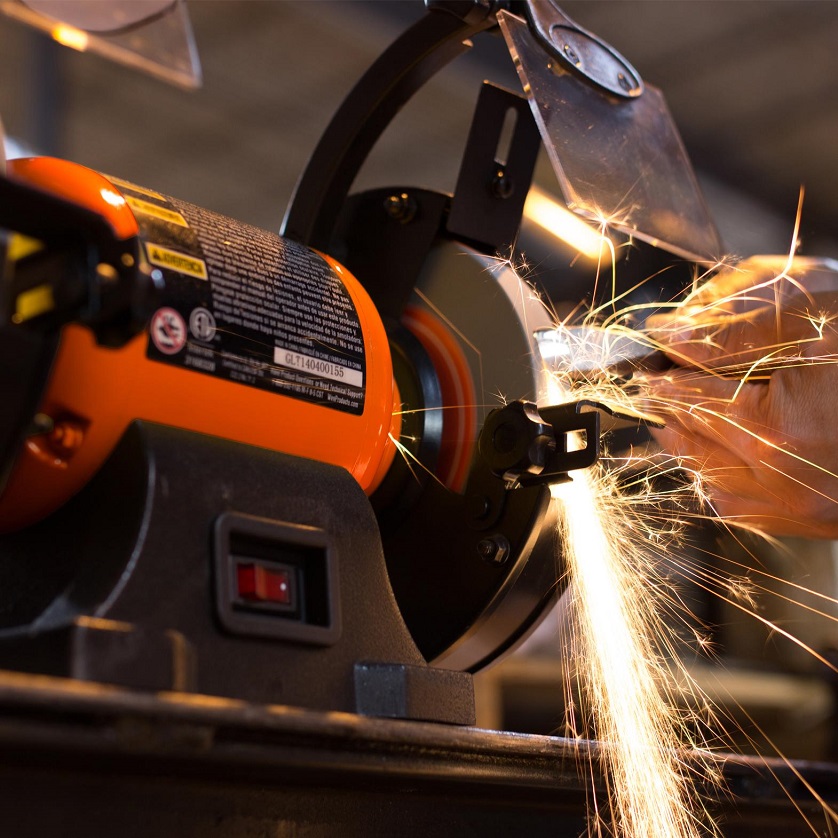If you have ever tried to create something yourself, you have probably realized that cutting through hard surfaces is much harder on you than it is on the saw you use. The amount of power, effort and muscle that working with some materials requires sometimes is more than we actually have. In such cases, bench grinders are your ally and solution to maintain the excitement of your DIY project while also helping you not to put in as much strength while cutting through tough materials.
This tool is not very expensive. It has the size of a shoe box and all it needs is to be secured firmly to a workbench or other mount. It has two grinding wheels, one on either side of the motor housing. The bigger part of each wheel is covered by a guard, but about 90 degree arc of the perimeter of each wheel is exposed at the front of the grinder. There is an eye shield mounted above the opening in the guard; below is a tool rest.

If you are a DIY enthusiast working in his home workshop, you will probably never need heavy-duty, high-powered bench grinders. You will benefit from one powered by a one-quarter to one-half horsepower motor; one that has half-inch or inch-wide wheels of 5-6 inches in diameter. Grinders that have more powerful motors and wheels with 8+ inches in diameter could also help you do a good job. Usually, the wheels rotate at a speed between 3,000 and 3,600 revolutions in a minute.
A bench grinder can sharpen, shape, polish, buff, or clean just about any metal object, depending on which wheel you add. In order to use one, just attach the coarsest wheel that works best for your job. For instance, 36-grit can sharpen most gardening tools; 60-grit is best used for chisels and plane irons. Eighty – or 100-grit wheels work best for delicate jobs, such as shaping metal model parts.
Place the item you want to grind against the front wheel at an angle of about 25- 30 degree. Keep it moving. The combination of constant motion and rough grit will help ensure that the metal does not overheat. However, if your tool or drill bits starts heating up, dip it in a coffee can which is full of warmed fast-quench oil to prevent the microscopic cracks (which can develop from quickly cooling a hot tool by splashing it with cold water).











